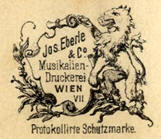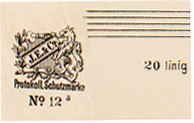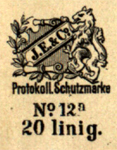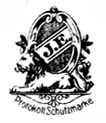
![Main heading: The Music of Gustav Mahler: A Catalogue of Manuscript and Printed Sources [rule] Paul Banks](../../images/General%20Heading3.jpg)
|
|
||||||||||
|
|
||||||||||
|
|
||||||||||
|
|
||||||||||
|
|
||||||||||
|
|
||||||||||
|
|
||||||||||
|
|
|
|||||||||
|
|
||||||||||
|
|
||||||||||
|
|
|
|||||||||
|
|
||||||||||
|
|
||||||||||
|
|
||||||||||
|
Index of Works |
|
|||||||||
|
Site Map |
|
|||||||||
|
|
||||||||||
|
|
|
|||||||||
|
|
||||||||||
|
|
|
|||||||||
|
|
|
|||||||||
|
||||||||||
Jos. Eberle & Co.: Manuscript Paper
The exact date that Josef Eberle started manufacturing this specialist stationery is not quite certain, but adverts dating from the turn of the century suggest it was c. 1883/4. On 29 September 1887 a complete list of the formats available from the firm was circulated as a free supplement in the Viennese periodical, Die Lyra. Unfortunately no copy of that supplement has yet come to light, but two years later the advert reproduced below was printed on the inner back wrapper of Band XII of Lanner Sämmtliche Werke, ed. Eduard Kremser (Wiener Volksausgabe No. 22) (Wien: Jos. Eberle & Co., 1889). The quarto formats frequently used by professionals came in two qualities of paper: Hugo Wolf was of the opinion that the cheaper, second quality paper was perfectly satisfactory (HWB, II, 768).
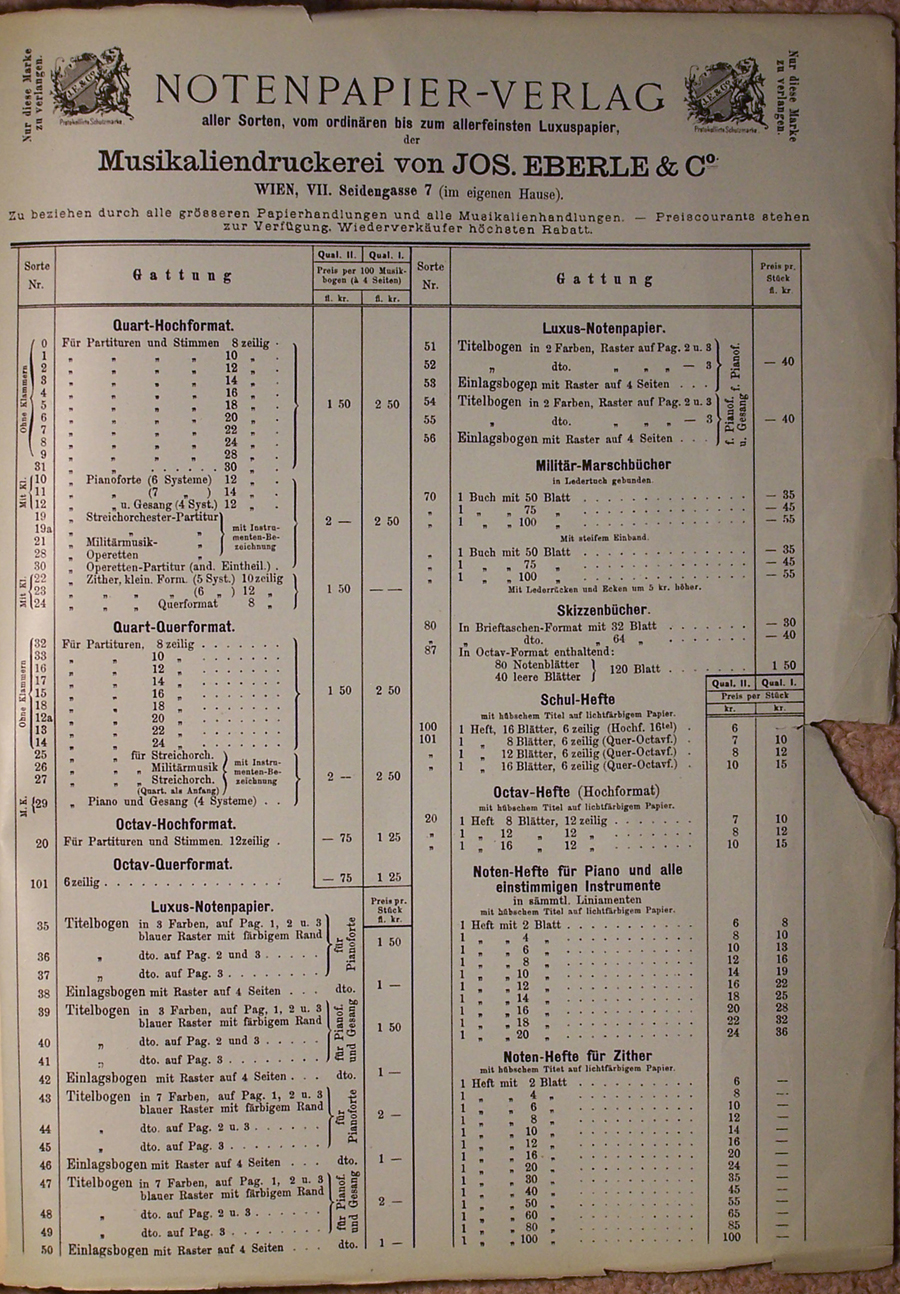
Fig. 1
Advertisement for Eberle Manuscript Paper, c. 1889
One of the distinctive features of Eberle's manuscript papers was the use of a registered trademark that evolved during the 1880s:
|
|
|
|
Fig. 2a Eberle & Co. trademark, variant a ?1883/4–c. 1887/1888 |
Fig. 2b Eberle & Co. trademark, variant b c. 1887/8 onwards |
The adoption of the new form of the trademark was almost certainly a gradual process, depending on the size and rate of depletion of the unsold stock of the various formats. The conjectural dates offered above are based on the examination of a sample of datable manuscripts by composers working in Vienna during the period, most notably Johann Strauss II and Hugo Wolf, both of whom made extensive use of Eberle paper.
Normally the later form of the trademark (Fig. 3b) was printed with the paper type number (Sorte Nr.) and a statement of the number of staves, in the bottom l.h. corner of fol. 1r of each Bogen (bifolio), but in a few instances the statement of the number of staves was displaced to a position on the right of the main logo (Fig. 3a):
|
|
|
|
Fig. 3a Eberle & Co. trademark, variant b1
|
Fig. 3b Eberle & Co. trademark, variant b2 |
Among Mahler's surviving manuscripts variant b1 is rare,¹ but in the sketches and drafts for the Fourth Symphony it appears in examples of Sorte Nr. 12ª, 13, and 20.
N.B. In this catalogue, unless otherwise specified, references to J.E. & Co. paper refer to the variant b2.
Josef Eberle's Musikaliendruckerei
Following Josef Eberle's resignation from the board of the Erste Wiener Zeitungsgesellschaft early in 1898 he set up a new printing and publishing business, and in particular attempted to challenge his old firm's dominance of the manuscript paper market in Vienna. One of the new trademarks used on such paper produced by his new company, Josef Eberle's Musikaliendruckerei (hereafter JEM), cleverly retained some of the elements of his original design and claimed that it was a registered mark (fig. 4a); whether it was registered is a moot point: other examples of the firm's marks do not make such a claim (see fig. 4b).
|
|
|
|
Fig. 4a |
Fig. 4b |
Mahler mostly used J.E. & Co. paper, but he seems not to have wholly avoided JEM paper. For example, apart from the title pages and a few other leaves, the first two movements of Mahler's autograph fair copy of the Seventh Symphony use that firm's paper. (The third and fourth movements revert largely to J.E. & Co. paper, while the finale is mostly on a Breitkopf & Härtel paper.) Mahler also used manuscript paper manufactured by Josef Eberle's Musikaliendruckerei for a few sketches of Tenth Symphony (1910), although the paper is not identified as such or separately documented in Frans Boumann's invaluable transcription of the manuscript sources of the work (FBGM10).

![]() https://orcid.org/0000-0002-2258-0267
©
2007-21 Paul Banks | This page was lasted edited on
25 May 2021
https://orcid.org/0000-0002-2258-0267
©
2007-21 Paul Banks | This page was lasted edited on
25 May 2021
